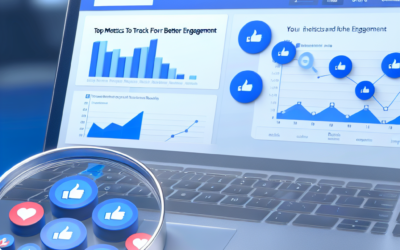How to Use Social Media Analytics to Drive Business Growth
In today’s digital age, social media is not just a platform for connecting with friends and family; it has become a powerful tool for businesses to engage with their audience, build brand awareness, and drive growth. However, to truly harness the potential of social media, businesses must delve into social media analytics. This article explores how businesses can use social media analytics to fuel growth, offering insights, examples, and actionable strategies.
Understanding Social Media Analytics
Social media analytics involves collecting and analyzing data from social media platforms to make informed business decisions. It provides insights into customer behavior, engagement patterns, and the effectiveness of marketing strategies. By leveraging these insights, businesses can tailor their approaches to meet customer needs and enhance their market presence.
Key Metrics to Monitor
To effectively use social media analytics, businesses should focus on key metrics that align with their goals. Here are some essential metrics to consider:
- Engagement Rate: Measures how actively your audience interacts with your content through likes, comments, shares, and clicks.
- Reach and Impressions: Reach indicates the number of unique users who see your content, while impressions reflect the total number of times your content is displayed.
- Follower Growth: Tracks the increase or decrease in your social media followers over time.
- Conversion Rate: Measures the percentage of users who take a desired action, such as signing up for a newsletter or making a purchase.
- Sentiment Analysis: Analyzes the tone of user comments and mentions to gauge public perception of your brand.
Leveraging Social Media Analytics for Business Growth
1. Enhancing Content Strategy
By analyzing which types of content resonate most with your audience, businesses can refine their content strategy. For instance, if video content receives higher engagement than static images, a company might focus more on producing video content. A case study by HubSpot revealed that businesses using video content saw a 49% faster revenue growth compared to those that didn’t.
2. Identifying Target Audience
Social media analytics can help businesses identify their target audience’s demographics, interests, and online behavior. This information is crucial for creating personalized marketing campaigns. For example, a fashion brand might discover that its primary audience is young women aged 18-24, allowing it to tailor its messaging and product offerings accordingly.
3. Optimizing Ad Campaigns
Analytics provide insights into the performance of social media ad campaigns, enabling businesses to optimize their strategies for better results. By analyzing metrics such as click-through rates and conversion rates, companies can adjust their ad targeting and creative elements to maximize ROI. A study by WordStream found that businesses using data-driven ad strategies achieved a 20% higher conversion rate.
4. Monitoring Competitor Performance
Social media analytics tools allow businesses to track competitor performance and benchmark their own efforts. By understanding what works for competitors, companies can identify opportunities and gaps in their strategies. For instance, if a competitor’s campaign is gaining traction, a business can analyze the elements contributing to its success and adapt similar tactics.
Tools for Social Media Analytics
Several tools can help businesses effectively analyze social media data:
- Google Analytics: Offers insights into website traffic from social media platforms.
- Hootsuite: Provides comprehensive analytics and reporting features for various social media channels.
- Sprout Social: Offers detailed audience insights and engagement metrics.
- Buffer: Provides analytics on post performance and audience engagement.
Conclusion
Social media analytics is a powerful tool for driving business growth. By understanding and leveraging key metrics, businesses can enhance their content strategies, identify target audiences, optimize ad campaigns, and monitor competitor performance. As the digital landscape continues to evolve, businesses that effectively utilize social media analytics will be better positioned to thrive in a competitive market. Start integrating analytics into your social media strategy today and watch your business grow.
Incorporate these insights into your business strategy and take the first step towards data-driven growth. The future of business success lies in understanding and acting on the wealth of information that social media analytics provides.









